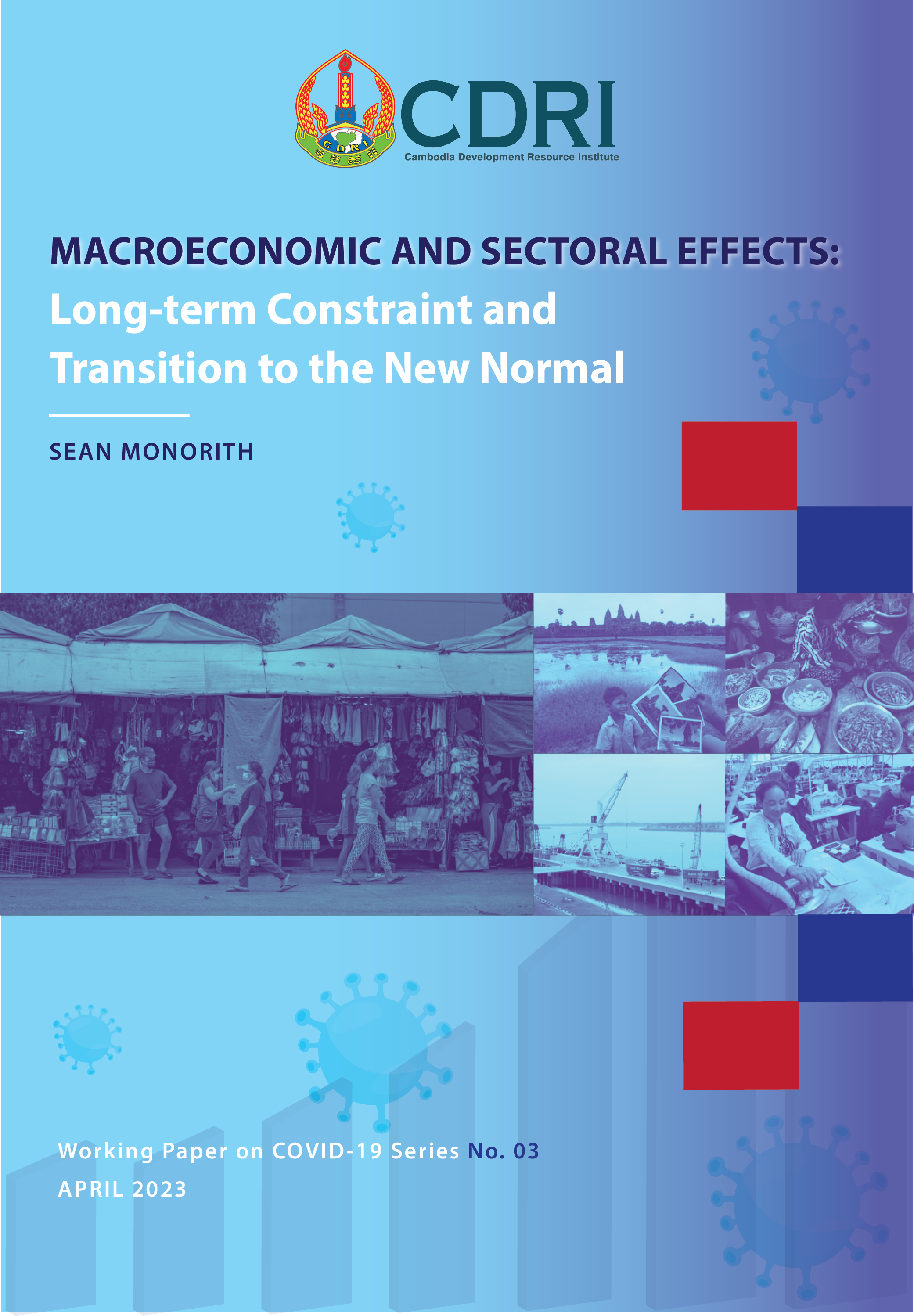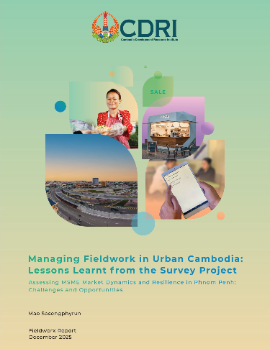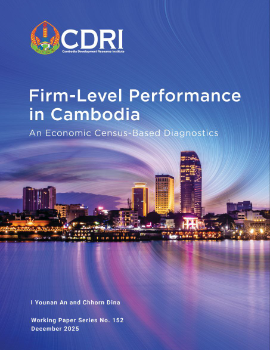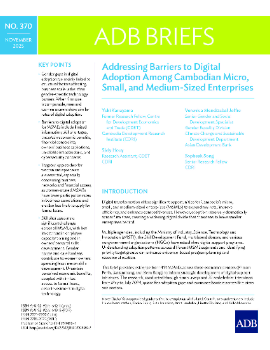
Macroeconomic and Sectoral Effects: Long-term Constraint and Transition to the New Normal
Abstract/Summary
Cambodia’s economy has made significant progress over the decades. However, the smooth and robust developments were significantly disturbed in 2020 with the arrival of the global Covid-19 pandemic. Globally, both internal and external demands, FDI flows, the movement of goods, and travel were all severely impacted by governments increasingly imposing lockdowns and other restrictions to contain the spread of the unprecedented and deadly disease.
From an economic standpoint, sectors that are high-contact including tourism, textile and apparel, construction, and real estate as well as other service-related sectors, suffered severely due to the pandemic. The GDP growth has plunged to a 20-year historic low of -3.1% in 2020 compared to the average of 7% growth rate over the same period. Many businesses were forced to suspend operations or shut down while many employees were either laid off or had to work fewer hours. As a result, the unemployment rate rose to 2.4% in 2020, which is a significant departure from the unemployment rate over the past decade (between 0.1% and 0.3%). As many as 83% of households reported having received less income during the peak of the impact, and the poverty rate surged to 17.8% in 2020 after having dropped to less than 10% before the pandemic.
However, the economic impacts could have been much more severe, causing more scarring, had it not been for interventions from the government and central bank that implemented fiscal policy, monetary policy, and other unprecedented measures to counteract the pandemic’s impact. In fact, fiscal deficit was widened significantly both in 2020 and 2021 because of higher fiscal spending and lower revenue generation due to tax relief measures helping businesses stay afloat and individuals maintain their livelihood. The monetary measures implanted included the maintenance of the capital conservation buffer at 50%, loan restructuring, and other flexible measures were introduced to help relieve the impacts of pandemic. Even though the initial shock of Covid-19 gradually faded out, its social and economic impacts are long-lasting. Therefore, further policy developments will play a crucial role in bringing Cambodia’s economic growth back to its potential.
The following sections will briefly discuss Cambodia’s macroeconomic performance before the Covid-19 pandemic, and then describe the impacts of Covid-19 on various aspects including economic sectors, society, financial sector and fiscal position. Finally, the chapter concludes with a description of policy directions put forth by the Royal Government of Cambodia (RGC) both during and after the pandemic.



